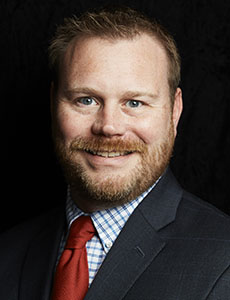Heat Doesn’t Take a Holiday — Neither Should Safety Measures
In some parts of the country, folks are pulling sweaters out of the closet and ordering pumpkin lattes.
But while we kiss summer goodbye, let’s not forget that workers in Arizona, Texas and Florida are still facing dangerous temperatures well into fall and beyond.
Let’s also keep in mind those workers in hot indoor environments — from foundries and kitchens to warehouses without adequate climate control — who face heat risks regardless of what the thermometer says outside. Workplace heat exposure kills dozens of workers annually while sickening thousands more.
The worst part is these incidents are almost entirely preventable. That’s why the regulatory momentum we’re seeing right now is so critical. OSHA’s proposed federal Heat Injury and Illness Prevention rule, which wrapped up public hearings in July, would create the first-ever national standard requiring employers to evaluate and control heat hazards.
The rule would apply to both outdoor and indoor work across all industries where OSHA has jurisdiction — affecting an estimated 36 million workers. But federal action is just part of the picture.
Some states took the reins on their own. Nevada just began enforcing its new heat illness prevention regulation in April 2025, joining California, Washington, Oregon, Colorado, Minnesota and Maryland in establishing their own protective standards.
These rules share commonsense strategies, from better training to triggering protections when temperatures reach 80°F, and requiring employers to provide water, rest breaks, and cool-down areas. Enhanced protections kick in at 90°F, often including mandatory paid rest breaks and closer monitoring for heat illness symptoms.
Here’s what strikes me most about these regulations: None of these things are onerous, expensive or unreasonable. Water, rest, shade, training — these are fundamental protections that demonstrate common sense as well as respect for workers’ wellbeing. What does that say about employers still lagging on heat safety precautions?
It says they don’t have top-down buy-in for safety. Leaders in at-risk industries must recognize that worker heat protections aren’t bureaucratic bloat, but rather lifesaving protocols. Investment in heat safety pays dividends in reduced claims, improved productivity, and stronger safety cultures and morale.
We can all influence better outcomes by promoting proactive heat risk management. There is knowledge and experience across this industry that can save lives, and we have a responsibility to share it. To those of you already running successful heat risk management protocols, consider sharing your knowledge and your lessons learned with others.
How about publishing an article about the biggest obstacle your heat safety program had to overcome? Talk about it on video and post it on YouTube. Present a case study at a local business seminar.
Or just keep talking to your industry colleagues about it at every opportunity. Here’s the bottom line: Heat safety isn’t a summer problem — it’s a human problem. And protecting vulnerable workers from preventable harm shouldn’t be optional, no matter the season. &










